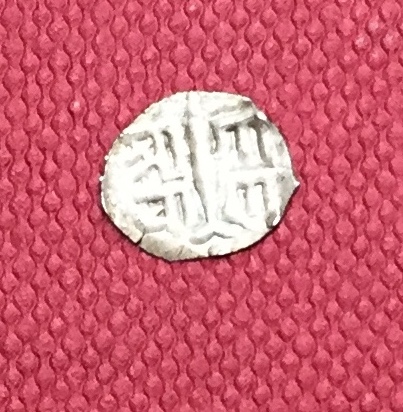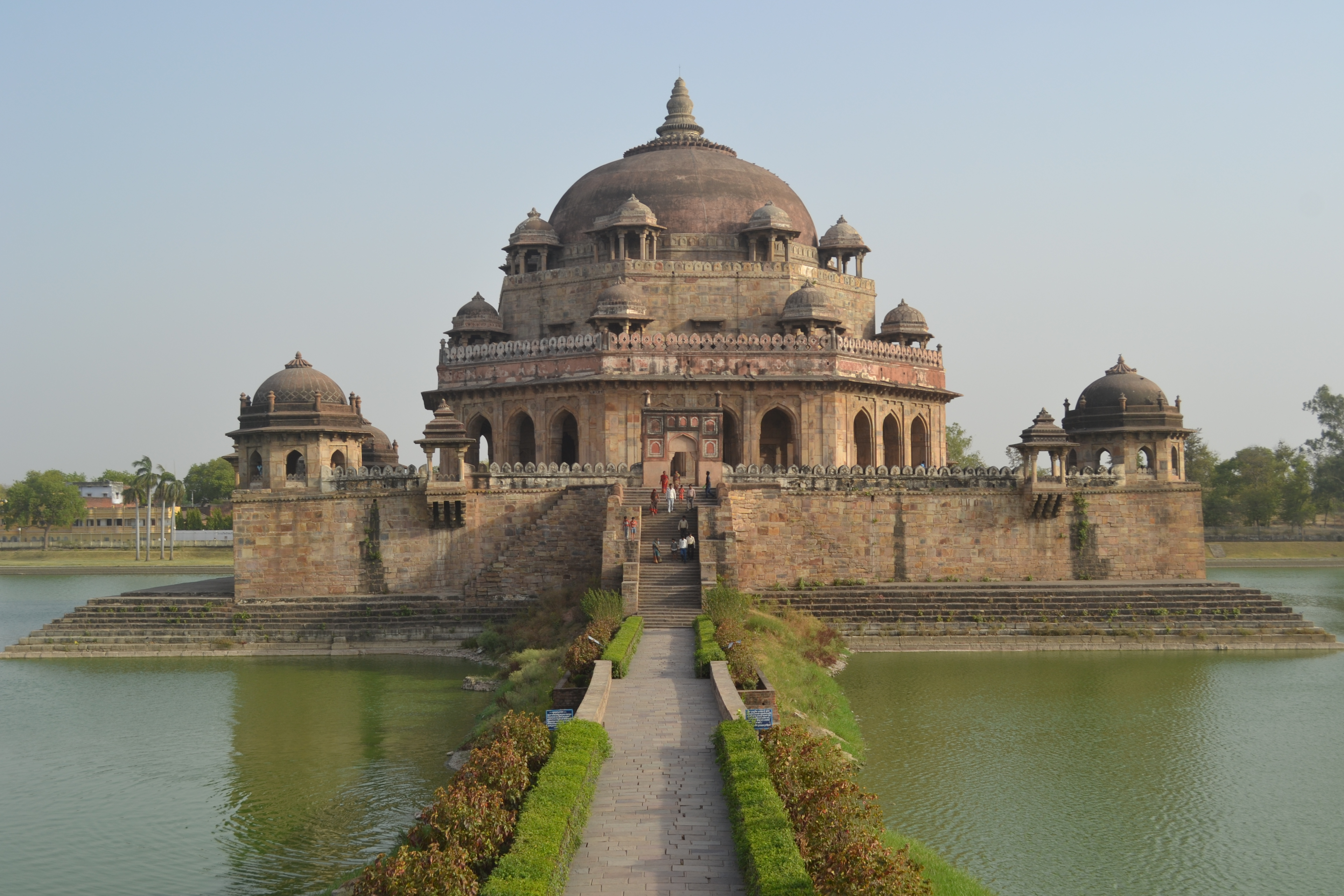|
Dam (Nepali Coin)
Dam was a small coin, either silver, gold or copper first minted during between c. 1098 - 1126 CE., replacing old Licchavi coinage. History First introduced by King Sivadeva during his between c. 1098 and 1126 CE., replacing old Lichhavi coinage. In the new system Gold Sivaka, Silver Dam and later Nava-Dam-Sivaka and copper Dam were introduced as a new denomination. Types Originally Nepali Dam, were made of 1 g pure silver or copper, but Later minting of copper Dam was discontinued in the Malla period and dam started getting smaller and smaller up-to 0.04 g. Copper Dams were reintroduced during Shah era but was only used in other Hill and Terai region of Nepal as tiny silver dams were preferred by the locals of Kathmandu Valley. In popular culture ''Watch Your Language'' lists the coin as one of the possible sources for the English phrase "I don't give a dam Ć│, due to its small worth, but provides other sources as well.Gorrell, Robert, ''Watch Your Language: Mother Tongue and ... [...More Info...] [...Related Items...] OR: [Wikipedia] [Google] [Baidu] |
Silver Dam Girvana Yuddha
Silver is a chemical element with the symbol Ag (from the Latin ', derived from the Proto-Indo-European ''hŌééerŪĄ'': "shiny" or "white") and atomic number 47. A soft, white, lustrous transition metal, it exhibits the highest electrical conductivity, thermal conductivity, and reflectivity of any metal. The metal is found in the Earth's crust in the pure, free elemental form ("native silver"), as an alloy with gold and other metals, and in minerals such as argentite and chlorargyrite. Most silver is produced as a byproduct of copper, gold, lead, and zinc refining. Silver has long been valued as a precious metal. Silver metal is used in many bullion coins, sometimes alongside gold: while it is more abundant than gold, it is much less abundant as a native metal. Its purity is typically measured on a per-mille basis; a 94%-pure alloy is described as "0.940 fine". As one of the seven metals of antiquity, silver has had an enduring role in most human cultures. Other than in curre ... [...More Info...] [...Related Items...] OR: [Wikipedia] [Google] [Baidu] |
Licchavi (kingdom)
Licchavi (also ''Lichchhavi'', ''Lichavi'') was a kingdom which existed in the Kathmandu Valley in modern-day Nepal from approximately 400 to 750 CE. The Licchavi clan originated from Vaishali, and conquered Kathmandu Valley. The Lichchhavis elected an administrator and representatives to rule them. The ruling period of this dynasty was called the Golden Period of Nepal. A table of the evolution of certain Gupta characters used in Licchavi inscriptions prepared by Gautamavajra Vajr─üc─ürya can be found online. Records It is believed that a branch of the Lichhavi clan, having lost their political fortune in Vaishali (Bihar), came to Kathmandu, attacking and defeating the last Kirat King Gasti . In the Buddhist Pali canon, the Licchavi are mentioned in a number of discourses, most notably the Licchavi Sutta, the popular Ratana Sutta and the fourth chapter of the Petavatthu. The Mahayana Vimalakirti Sutra also spoke of the city of Vaishali as where the lay Licchavi bodhisat ... [...More Info...] [...Related Items...] OR: [Wikipedia] [Google] [Baidu] |
Kathmandu Valley
The Kathmandu Valley ( ne, ÓżĢÓżŠÓżĀÓż«ÓżŠÓżĪÓźīÓżé ÓżēÓż¬ÓżżÓźŹÓż»ÓżĢÓżŠ; also known as the Nepal Valley or Nepa Valley ( ne, Óż©ÓźćÓż¬ÓżŠÓżā ÓżēÓż¬ÓżżÓźŹÓż»ÓżĢÓżŠ, Nepal Bhasa: æÉŻæÉŠæÉźæÉĄææģ æÉÉæÉĄææģ, Óż©ÓźćÓż¬ÓżŠÓżā ÓżŚÓżŠÓżā)), is a bowl-shaped valley located in the Himalayan mountains in Nepal. It lies at the crossroads of ancient civilizations of the Indian subcontinent and the broader Asian continent, and has at least 130 important monuments, including several pilgrimage sites for Hindus and Buddhists. There are seven World Heritage Sites within the valley. The Kathmandu Valley is the most developed and the largest urban agglomeration in Nepal with about 5 million population. The urban agglomeration of Kathmandu Valley includes the cities of Kathmandu, Lalitpur, Budhanilkantha, Tarakeshwar, Gokarneshwar, Suryabinayak, Tokha, Kirtipur, Madhyapur Thimi, Bhaktapur, etc. The majority of offices and headquarters are located in the valley, making it the economic h ... [...More Info...] [...Related Items...] OR: [Wikipedia] [Google] [Baidu] |
Nepalese Mohar
The mohar was the currency of the Kingdom of Nepal from the second half of the 17th century until 1932. Silver and gold mohars were issued, each subdivided into 128 ''dams''. Copper dams were also issued, together with copper ''paisa'' worth 4 copper dams. The values of the copper, silver and gold coinages relative to one another were not fixed until 1903. In that year, the silver mohar became the standard currency, divided into 50 paisa. It was replaced in 1932 by the rupee, also called the ''mohru'' (Moru), at a rate of 2 mohars = 1 rupee. Coins Nepalese mohar 816.rev.jpg, Nepalese silver mohar in the name of King Bhupatindra Malla (ruled 1696-1722) of Bhadgaon (Bhaktapur), dated Nepal Era 816 = AD 1696, reverse. Nepal30005a.JPG, Mohar of king Prithvi Narayan Shah dated Saka Era 1685 (AD 1763). Nepal30005.JPG, Nepalese silver mohar in the name of king Chakravartendra Malla of Kathmandu, dated Nepal Sambat 789 = AD 1669, obverse. Nepal30007.JPG, Nepalese silver mohar in the na ... [...More Info...] [...Related Items...] OR: [Wikipedia] [Google] [Baidu] |
Coinage Of Nepal
The earliest coin minted in today's territory of Nepal was in Shakya Mahajanapada, along the IndiaŌĆōNepal border at around 500 BCE. Shakya coins were an example of a coin invented in the Indian subcontinent which continued to be used in Nepal alongside India for over 1500 years. Coins from Indian Subcontinent Post-Maha Janapadas period (c. BCE 600ŌĆō?) In the Maurya Empire, punch marks were widely used in the southern region of Nepal and also imported from hills and the Kathmandu valley. Mauryan coins were punch-marked with the royal standard to ascertain their authenticity. Kushan Empire (c. CE 30ŌĆō375) Another major coinage found in Nepal was of the Kushan Empire, a syncretic empire, formed by Yuezhi in the Bactrian territories in the early 1st century CE. It spread to encompass much of Afghanistan and the northern parts of the Indian subcontinent at least as far Nepal. These coins were widely used in the Southern region of Nepal but rarely used in the hills and Ka ... [...More Info...] [...Related Items...] OR: [Wikipedia] [Google] [Baidu] |
Modern Obsolete Currencies
Modern may refer to: History * Modern history ** Early Modern period ** Late Modern period *** 18th century *** 19th century *** 20th century ** Contemporary history * Moderns, a faction of Freemasonry that existed in the 18th century Philosophy and sociology * Modernity, a loosely defined concept delineating a number of societal, economic and ideological features that contrast with "pre-modern" times or societies ** Late modernity Art * Modernism ** Modernist poetry * Modern art, a form of art * Modern dance, a dance form developed in the early 20th century * Modern architecture, a broad movement and period in architectural history * Modern music (other) Geography *Modra, a Slovak city, referred to in the German language as "Modern" Typography * Modern (typeface), a raster font packaged with Windows XP * Another name for the typeface classification known as Didone (typography) * Modern, a generic font family name for fixed-pitch serif and sans serif fonts (f ... [...More Info...] [...Related Items...] OR: [Wikipedia] [Google] [Baidu] |
Currencies Of Nepal
A currency, "in circulation", from la, currens, -entis, literally meaning "running" or "traversing" is a standardization of money in any form, in use or circulation as a medium of exchange, for example banknotes and coins. A more general definition is that a currency is a ''system of money'' in common use within a specific environment over time, especially for people in a nation state. Under this definition, the British Pound Sterling (┬Ż), euros (Ōé¼), Japanese yen (┬ź), and U.S. dollars (US$)) are examples of (government-issued) fiat currencies. Currencies may act as stores of value and be traded between nations in foreign exchange markets, which determine the relative values of the different currencies. Currencies in this sense are either chosen by users or decreed by governments, and each type has limited boundaries of acceptance - i.e. legal tender laws may require a particular unit of account for payments to government agencies. Other definitions of the term "currency ... [...More Info...] [...Related Items...] OR: [Wikipedia] [Google] [Baidu] |
Sur Empire
The Sur Empire ( ps, ž» ž│ž▒┘ł ž¦┘ģ┘Šž▒ž¦ž¬┘łž▒█Ź, d├½ sru ampar─ütur╔Öi; fa, ž¦┘ģ┘Šž▒ž¦žĘ┘łž▒█ī ž│┘łž▒, emper├óturi sur) was an Afghan dynasty which ruled a large territory in the northern part of the Indian subcontinent for nearly 16 years, between 1540 and 1556, with Sasaram, in modern-day Bihar, serving as its capital. The Sur dynasty held control of nearly all the Mughal territories, from eastern Balochistan, Pakistan in the west to modern-day Rakhine, Myanmar in the east. History Sher Shah, an ethnic Pashtun of the tribal house of Sur, first served as a private before rising to become a commander in the Mughal army under Babur and then the governor of Bihar. In 1537, when Babur's son Humayun was elsewhere on an expedition, Sher Shah overran the state of Bengal and established the Suri dynasty. The Sur supplanted the Mughal dynasty as rulers of North India during the reign of the relatively ineffectual second Mughal Humayun. Sher Shah defeated ''badshah-i-Hind'' ... [...More Info...] [...Related Items...] OR: [Wikipedia] [Google] [Baidu] |


.png)


